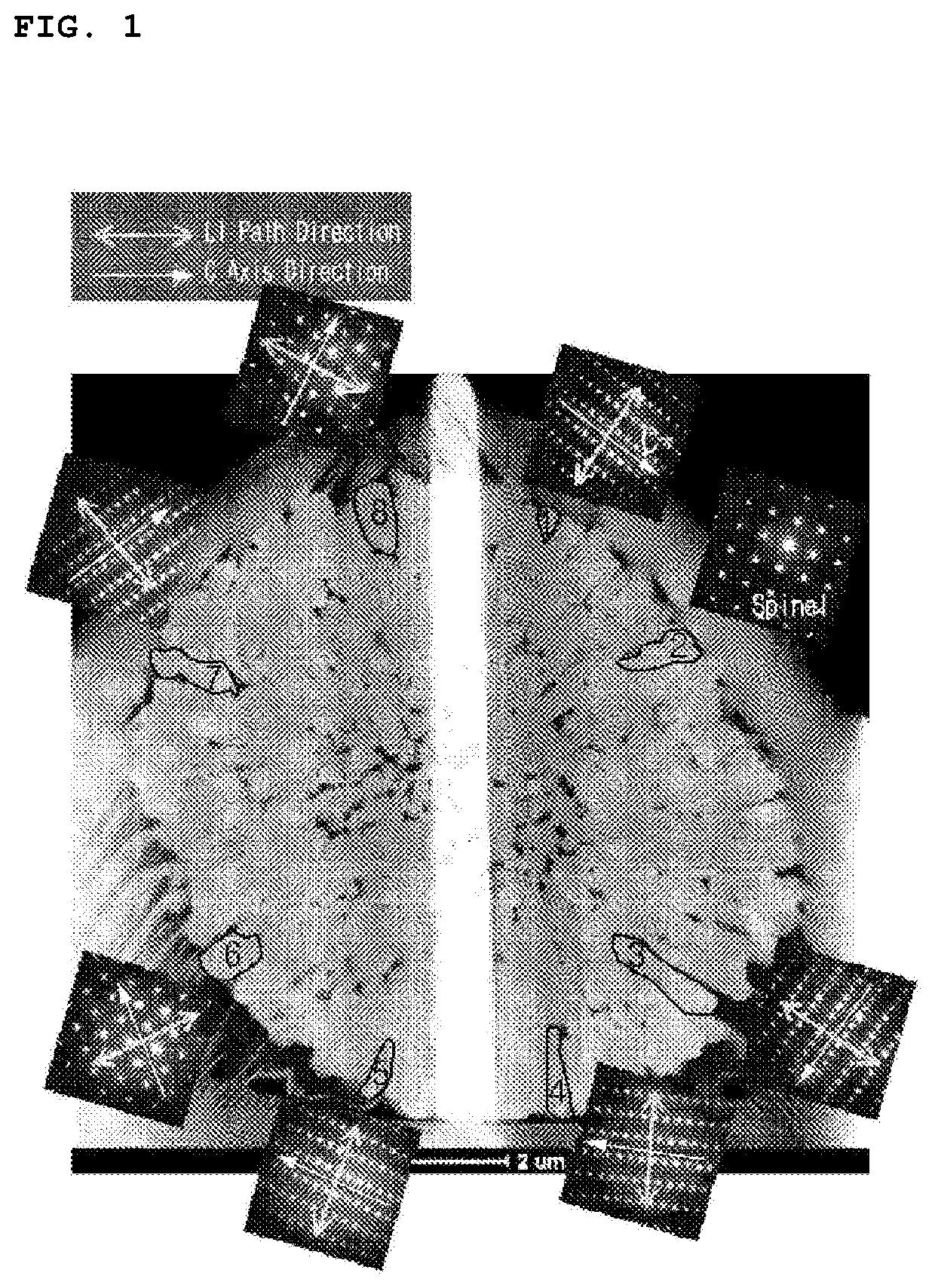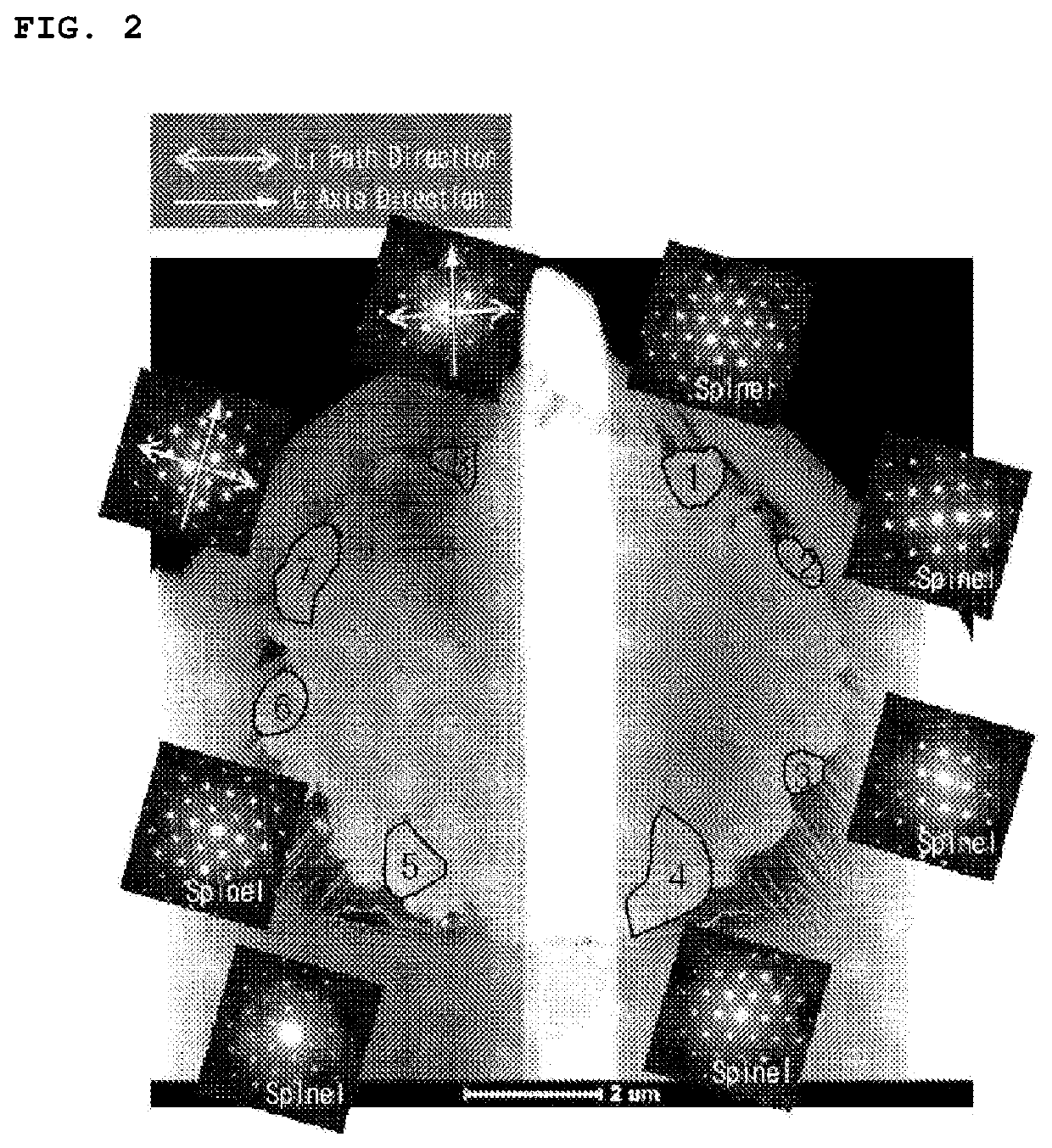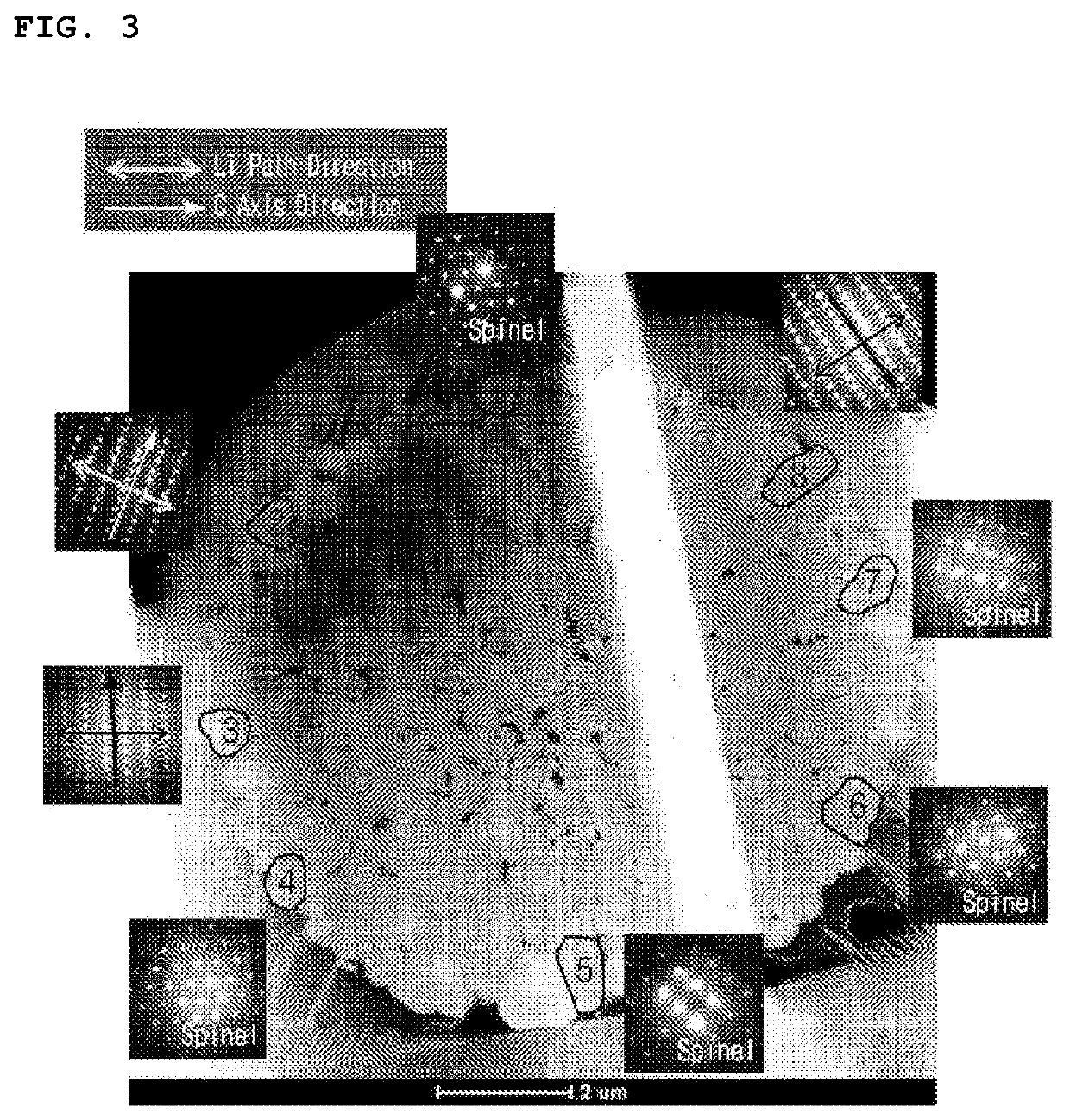Positive Electrode Active Material For Lithium Secondary Battery, Method of Preparing the same, and Positive Electrode for Lithium Secondary Battery and Lithium Secondary Battery which include the positive Electrode Active Material
a lithium secondary battery and active material technology, applied in the direction of cell components, electrochemical generators, nickel compounds, etc., can solve the problems of difficult synthesis poor thermal properties and limitation in using a large amount of lithium cobalt oxide as a power source of a medium and large sized device, etc., to achieve excellent output characteristics, reduce production costs of a secondary battery including a lithium transition metal oxide, and improve structural stability
- Summary
- Abstract
- Description
- Claims
- Application Information
AI Technical Summary
Benefits of technology
Problems solved by technology
Method used
Image
Examples
example 1
[0126](Preparation of Positive Electrode Active Material)
[0127]A first transition metal-containing solution with a concentration of 2.3 M was prepared by mixing NiSO4 and MnSO4 in water in amounts such that a molar ratio of nickel:manganese was 95:5.
[0128]Also, a second transition metal-containing solution with a concentration of 2.3 M was prepared by mixing NiSO4, CoSO4, and MnSO4 in water in amounts such that a molar ratio of nickel:cobalt:manganese was 59:12.5:28.5.
[0129]A container containing the first transition metal-containing solution and a container containing the second transition metal-containing solution were connected to a 250 L reactor set at 53° C. In addition, a 25% NaOH solution and a 15% NH4OH aqueous solution were prepared and connected to the reactor, respectively.
[0130]Subsequently, 55 L of deionized water was put in the reactor, and the reactor was then purged with nitrogen gas at a rate of 200 L / min to remove dissolved oxygen in the water and create a non-oxid...
example 2
[0139]During the preparation of a positive electrode active material, a first transition metal-containing solution with a concentration of 2.3 M was prepared by mixing NiSO4 and MnSO4 in water in amounts such that a molar ratio of nickel:manganese was 95:5, and a second transition metal-containing solution with a concentration of 2.3 M was prepared by mixing NiSO4, CoSO4, and MnSO4 in water in amounts such that a molar ratio of nickel:cobalt:manganese was 55:20.5:24.5. A positive electrode active material and a positive electrode and a lithium secondary battery, which include the same, were prepared in the same manner as in Example 1 except that a positive electrode active material precursor having an average composition of Ni0.65Co0.15Mn0.2(OH)2 was prepared by using the first transition metal-containing solution and the second transition metal-containing solution and the positive electrode active material precursor was used.
example 3
[0140]During the preparation of a positive electrode active material, a first transition metal-containing solution with a concentration of 2.3 M was prepared by mixing NiSO4 and MnSO4 in water in amounts such that a molar ratio of nickel:manganese was 95:5, and a second transition metal-containing solution with a concentration of 2.3 M was prepared by mixing NiSO4, CoSO4, and MnSO4 in water in amounts such that a molar ratio of nickel:cobalt:manganese was 55:13.5:31.5. A positive electrode active material and a positive electrode and a lithium secondary battery, which include the same, were prepared in the same manner as in Example 1 except that a positive electrode active material precursor having an average composition of Ni0.65Co0.10Mn0.25(OH)2 was prepared by using the first transition metal-containing solution and the second transition metal-containing solution and the positive electrode active material precursor was used.
PUM
| Property | Measurement | Unit |
|---|---|---|
| aspect ratio | aaaaa | aaaaa |
| concentration | aaaaa | aaaaa |
| transmission electron microscope | aaaaa | aaaaa |
Abstract
Description
Claims
Application Information
 Login to View More
Login to View More - R&D
- Intellectual Property
- Life Sciences
- Materials
- Tech Scout
- Unparalleled Data Quality
- Higher Quality Content
- 60% Fewer Hallucinations
Browse by: Latest US Patents, China's latest patents, Technical Efficacy Thesaurus, Application Domain, Technology Topic, Popular Technical Reports.
© 2025 PatSnap. All rights reserved.Legal|Privacy policy|Modern Slavery Act Transparency Statement|Sitemap|About US| Contact US: help@patsnap.com



